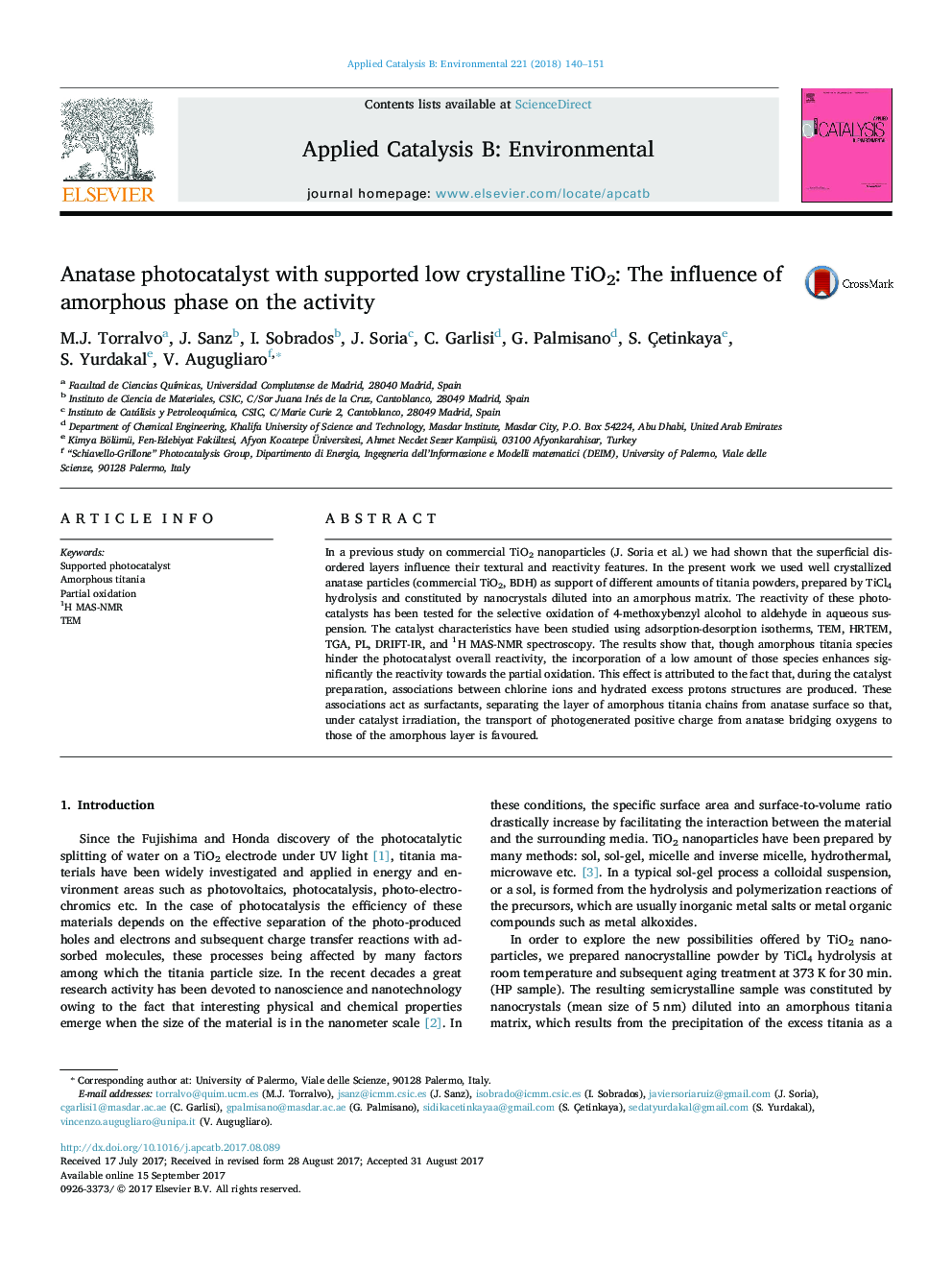| Article ID | Journal | Published Year | Pages | File Type |
|---|---|---|---|---|
| 6453404 | Applied Catalysis B: Environmental | 2018 | 12 Pages |
â¢Amorphous phases in TiO2 photocatalysts may positively affect partial oxidations.â¢Amorphous phases-crystals interactions modify structural and reactivity properties.â¢Thick amorphous layers on anatase surface strongly decrease the photoreactivity.
In a previous study on commercial TiO2 nanoparticles (J. Soria et al.) we had shown that the superficial disordered layers influence their textural and reactivity features. In the present work we used well crystallized anatase particles (commercial TiO2, BDH) as support of different amounts of titania powders, prepared by TiCl4 hydrolysis and constituted by nanocrystals diluted into an amorphous matrix. The reactivity of these photocatalysts has been tested for the selective oxidation of 4-methoxybenzyl alcohol to aldehyde in aqueous suspension. The catalyst characteristics have been studied using adsorption-desorption isotherms, TEM, HRTEM, TGA, PL, DRIFT-IR, and 1H MAS-NMR spectroscopy. The results show that, though amorphous titania species hinder the photocatalyst overall reactivity, the incorporation of a low amount of those species enhances significantly the reactivity towards the partial oxidation. This effect is attributed to the fact that, during the catalyst preparation, associations between chlorine ions and hydrated excess protons structures are produced. These associations act as surfactants, separating the layer of amorphous titania chains from anatase surface so that, under catalyst irradiation, the transport of photogenerated positive charge from anatase bridging oxygens to those of the amorphous layer is favoured.
Graphical abstractDownload high-res image (125KB)Download full-size image
